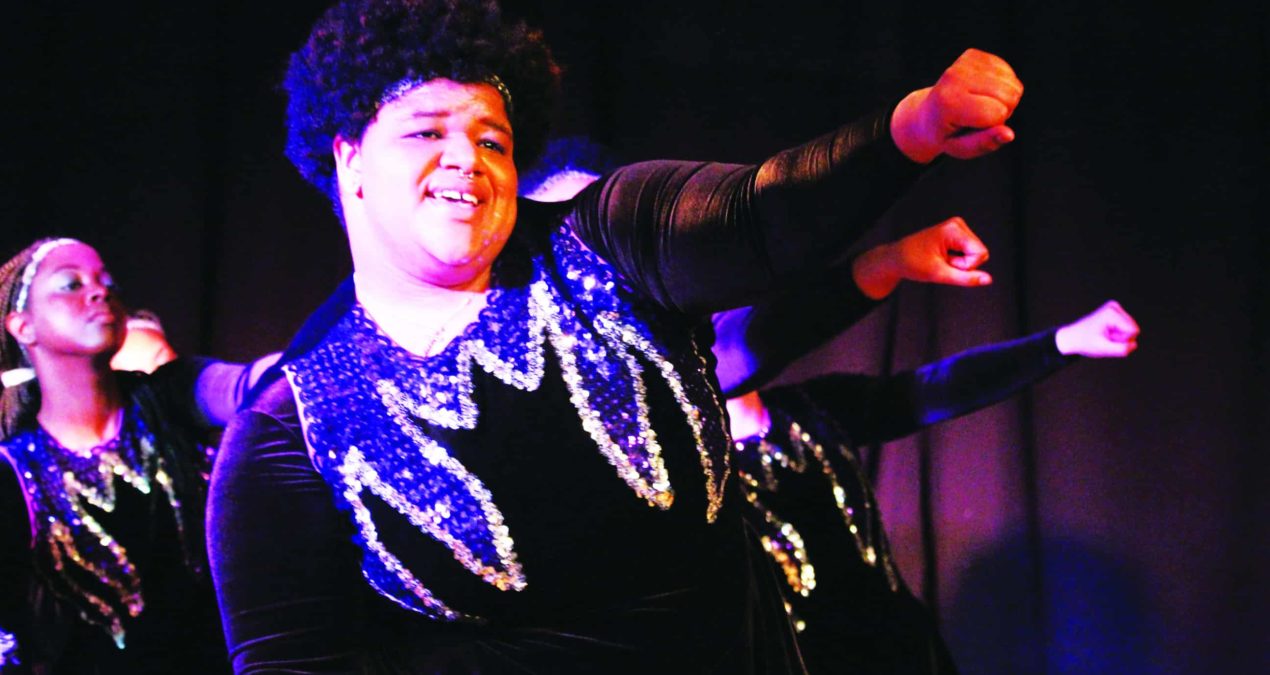By Kalyn Dunkins
Arts & Life Editor
“An Explosion of Black Expressions:” this phrase was used as an understatement to describe the eloquent and inspiring performances presented at the 2015 Black Rhythms performance this past Saturday in The Roost.
Dyamone Hopkins from Chicago, Imani Abernathy from Chicago and Rian Matthews from Washington, D.C., all members of the 2016 class, were the co-chairs of organizing and planning the event. They have been working and meeting together since October to make sure that the featured acts were performed exceptionally, a job that was undoubtedly fulfilled.
A goal that I wanted is that at least for somebody to be affected by the videos in the aspect that their perspective of Black Rhythms beforehand was completely different than what they actually witnessed when they got there,” Abernathy said.
When asked what it means to be Black on campus and what Black Rhythms means in a short introductory video to the show, responses like “rewarding” and “beautiful” were given by interviewees. Much emphasis was put on the idea that even though the group is at times marginalized and ostracized as minority, expressiveness and creativity is in no way hindered.
“It was extravagant, explosive and the best I’ve seen since my time here at Denison,” said Ariel Baez ’16 from Boston, Mass. “I feel that the organization of it was well planned and worked smoothly. Each participant put their heart in it.”
Following the introductory video was a drumming performance by D.U.D.E., the Denison University Drummin’ Ensemble. The rhythmic patterns pumped up the crowed so that they even began to join and clap along in cadence of the beats.
“I knew I wanted them to perform because I don’t think they perform enough on this campus, and I just love when they do it,” Matthews said. “I hear their rhythms when I’m in the dance department all the time, and it’s really dope so I definitely wanted to get them involved—when they said yes, I was super excited.”
Denison’s singing group Tehillah performed Goin’ Up Yonder and Oh Freedom as clips of civil rights activists rolled in the background. The vocals in conjunction with the video were so moving that the entire audience was captivated through the entire act. The performance ended with the singers lifting a fist of power. A bellow of cheers and applause followed.
Other acts included poetry by Stanisha Lang ’15 from Indianapolis, Ind. (“Native Tongue”) and Kaprisha Martin ’18 from Chicago (“This is Me”), spoken word videos (a piece by Earnestine Johnson and “Somewhere in America” by Belissa Escobedo, Rhiannon McGavin and Zariya Allen), a solo singing performance by Abernathy herself (If You’re Out There by John Legend), and a dance performance by the Denison Dazzlers. Priscilla Diaz ’17 from Manhattan, N.Y. was the show’s MC.
“I thought the performances were very inspirational, and I think they shed a positive light of Black people on Denison’s campus,” said India Anderson ’17 from Chicago.
“I don’t really know if we had a set goal in terms of, ‘Oh, I want the audience to take this away from the performances’—I know we wanted to address a couple of issues,” Matthews said. “Some of the video clips we played addressed what was omitted from teachings in wtextbooks [“Somewhere in America”], and other things talked about being ostracized and marginalized on campus.
“I know the dance we did [Four Women] dealt with the different shades of a Black woman and whatnot, and I think those are kind of in their own lane theme-wise, but they’re intertwined and make sense when we talk about the experiences of African-American people in general. There’s not just one experience—everyone’s experiencing something different all the time, but they all matter.”
“I wanted to show a lighter side of our history because the past two Black Rhythms were very dark and about slavery—not saying that’s not important, but that’s not something that I just always wanna show,” Hopkins added. “I wanna show the positive lifestyle of Black people on this campus, like we dance, we sing, we inspire and admire one another. Yes, we come in all different shades and sizes but that doesn’t mean we’re not a part of all one big community.
“We have to keep showing this campus that we’re more than what’s shown in the media and television and so much more than even sometimes what we ourselves think we’re capable of. Who knows—by the time we’re alumni’s and come back for Black Rhythms in the future, maybe the definition of what it means to be Black on campus will be completely different than what it is now.”
Photo Courtesy of Drew Gray

